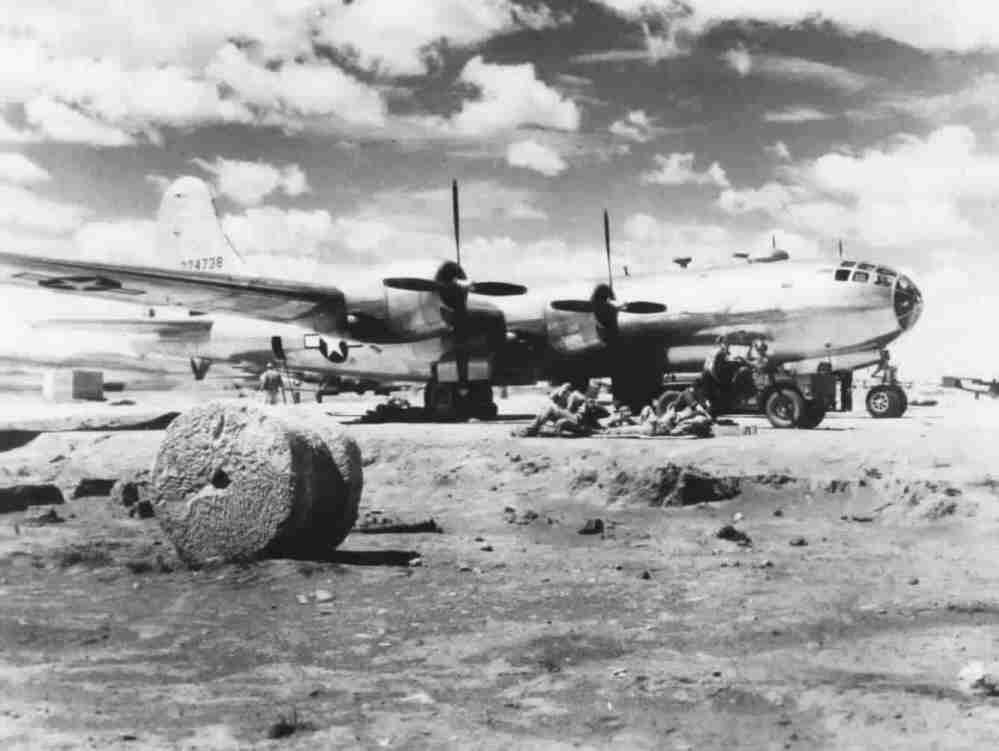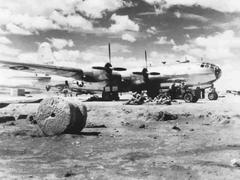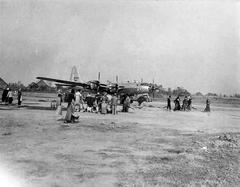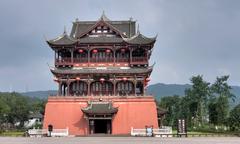
Xinjin Airport Chengdu Visiting Hours, Tickets, and Travel Guide
Date: 15/06/2025
Introduction
Located in the Xinjin District of Chengdu, Sichuan Province, Xinjin Airport is a landmark that fuses significant aviation heritage with current pilot training operations. Established in 1928 as a military airfield, Xinjin Airport played a pivotal role in China’s defense strategies, particularly during the Second Sino-Japanese War and World War II. Its transformation into a training base for the Civil Aviation Flight University of China highlights its enduring relevance in the region’s aviation advancement (Wikipedia; WW2DB; DBpedia).
Complementing this historical site is Xinjin Ancient Town, situated about 40 kilometers south of Chengdu. The town is celebrated for its preserved Sichuan architecture, lively markets, and riverside vistas, offering a glimpse into centuries-old customs. Its easy accessibility from Chengdu makes it a favorite day-trip destination for travelers seeking a blend of local culture and history (EastChinaTrip; Accidental Travel Writer).
This guide provides a comprehensive overview of Xinjin Airport and Xinjin Ancient Town, covering their history, visiting protocols, transportation, nearby attractions, practical tips, and essential FAQs.
Table of Contents
- Introduction
- History of Xinjin Airport
- Visiting Xinjin Airport
- Xinjin Ancient Town Guide
- Frequently Asked Questions
- Visuals and Media
- Integration with Chengdu’s Aviation Network
- Conclusion
- References
History of Xinjin Airport
Early Foundations and Strategic Importance
Xinjin Airport was constructed in 1928 as a military airfield. Its location in the fertile Sichuan Basin, near Chengdu, positioned it as a critical node for defense and transportation during periods of national turbulence (Wikipedia; WW2DB; DBpedia).
Wartime Significance
During the Second Sino-Japanese War, the airfield was upgraded to support modern aircraft and served as a defense outpost against Japanese aerial attacks. Its most notable period came during World War II, when Xinjin was used as a base for the US Army Air Forces under Operation Matterhorn. This made it a launch point for B-29 Superfortress bombers targeting Japan, underscoring its global military importance (WW2DB; Wikipedia).
Postwar Evolution
Following WWII, Xinjin transitioned to civilian use and is now primarily a pilot training base under the Civil Aviation Flight University of China, supporting the growth of China’s civil aviation sector (Wikipedia; DBpedia).
Visiting Xinjin Airport
Hours, Tickets, and Accessibility
- Visiting Hours: Xinjin Airport remains an active training site and is not typically open to the public. Special visits or guided tours may be arranged in advance through the Civil Aviation Flight University of China.
- Tickets: There is no standard ticketing system for casual visits. Prospective visitors should directly contact the university or local tourism offices for information on possible arrangements.
- Accessibility: The airport is accessible via Chengdu’s transportation network, including China National Highway 108 and regional railways. Visitors are advised to plan transport ahead and confirm visit permissions.
Travel Tips and Nearby Attractions
Xinjin District features more than just its airport. Travelers can enjoy Sichuan cuisine, explore scenic views of the basin, or venture into Chengdu’s urban attractions like the Research Base of Giant Panda Breeding and Jinli Ancient Street.
Legacy and Recognition
Though not a mainstream tourist attraction, Xinjin Airport’s story is preserved in military history circles and academic research. Its legacy as a site of international and domestic aviation history remains influential (WW2DB; DBpedia).
Xinjin Ancient Town Guide
Historical and Cultural Overview
Xinjin Ancient Town is a centuries-old settlement that once thrived as a trading hub. Its streets are lined with classic Sichuan architecture—wooden buildings, tiled roofs, and ornate carvings. Temples and ancestral halls reflect a deep-rooted cultural heritage. Festivals and folk arts continue to be celebrated, preserving the local spirit.
Visiting Information and Tickets
- Opening Hours: Daily, 8:00 AM – 6:00 PM. Specific temples or museums may have individual hours.
- Tickets: General admission is free. Some attractions, like temples or museums, may charge a small fee (10–30 RMB). Always check local sources for up-to-date pricing.
Getting There
- From Chengdu: About 40–45 kilometers south. Options include:
- Train: Regular services from Chengdu Railway Stations to Xinjin Station (1–1.5 hours).
- Bus: Intercity buses are available; check current schedules.
- Taxi/Ride-Hailing: Approximately 45–60 minutes by car or Didi, depending on traffic.
Things to See and Do
- Historic Streets: Cobblestone lanes with vendors selling handicrafts, snacks, and spices.
- Temples and Halls: Historic religious and ancestral sites with exquisite art.
- Riverside Scenery: Tranquil walks and photo opportunities along the river.
- Festivals: Experience music, dance, and local cuisine during traditional events.
- Teahouses: Immerse in Sichuan’s tea culture.
Practical Visitor Info
- Language: Mandarin is predominant. English is limited; translation apps are helpful.
- Payments: Most venues accept Alipay and WeChat Pay; have some RMB cash.
- Facilities: Public restrooms, eateries, and shops are available, but amenities can be basic.
- Accessibility: Some uneven and cobblestone streets; limited wheelchair access.
Accommodation and Dining
- Hotels: Xinjin has limited options, but Chengdu offers a wide range—from hostels to luxury hotels.
- Dining: Local restaurants serve authentic Sichuan cuisine, known for its spicy flavors.
Visitor Tips
- Best Time to Visit: March–June and September–November for mild weather.
- Safety: Use licensed taxis and safeguard valuables.
- Emergency Numbers: 110 (police), 120 (medical), 119 (fire).
Frequently Asked Questions
Xinjin Airport
Q: What are Xinjin Airport’s visiting hours?
A: The airport is generally closed to the public. Special visits require prior arrangement.
Q: How can I get a ticket to visit Xinjin Airport?
A: Contact the Civil Aviation Flight University of China or local tourism offices for arrangements.
Q: Is Xinjin Airport wheelchair accessible?
A: Accessibility details are limited; inquire in advance with the university.
Q: Are guided tours available?
A: Only by prior arrangement or during special events.
Q: What other sites are nearby?
A: Consider visiting the Chengdu Giant Panda Base, Wuhou Shrine, and Jinli Ancient Street.
Xinjin Ancient Town
Q: Is Xinjin Ancient Town suitable for a day trip?
A: Yes, it’s ideal for a day trip from Chengdu.
Q: Are there guided tours in English?
A: Some operators provide English-speaking guides; book in advance.
Q: Is the town accessible for those with mobility issues?
A: Some areas may be challenging due to cobblestone streets.
Visuals and Media
- Include high-quality images of Xinjin Airport’s airfield, WWII artifacts, and modern training facilities.
- Display photos of Xinjin Ancient Town’s streets, temples, riversides, and festivals.
- Embed maps showing locations relative to Chengdu and key transport routes.
Integration with Chengdu’s Aviation Network
Xinjin Airport is an integral part of Chengdu’s aviation system, supporting pilot training alongside major airports like Chengdu Shuangliu and Chengdu Tianfu International. This network cements Chengdu’s role as a transportation hub in southwest China (Accidental Travel Writer).
Conclusion
Xinjin Airport and Xinjin Ancient Town together offer a multifaceted exploration of Chengdu’s historical and cultural landscape. The airport’s contribution to national defense and aviation training, coupled with the ancient town’s lively heritage, make Xinjin District a unique destination for travelers. For current visiting protocols, always consult official channels. Enhance your journey by downloading the Audiala app and following our social platforms for updates and insider tips.



